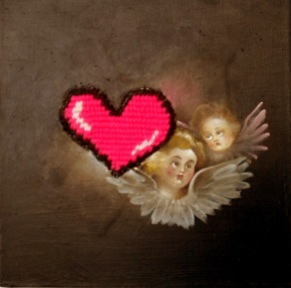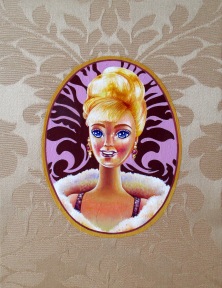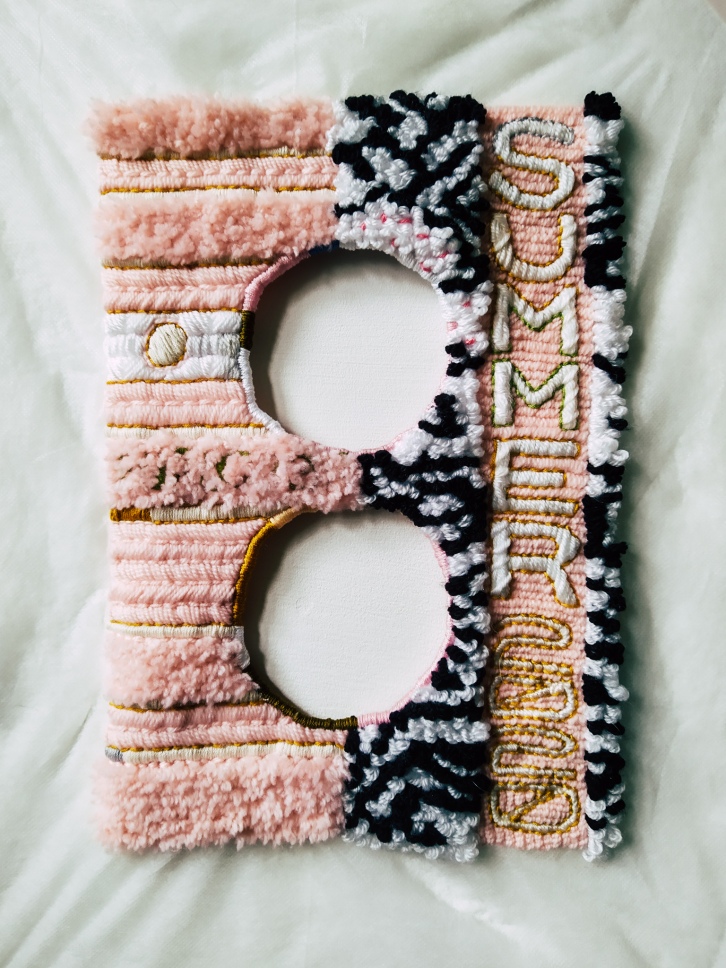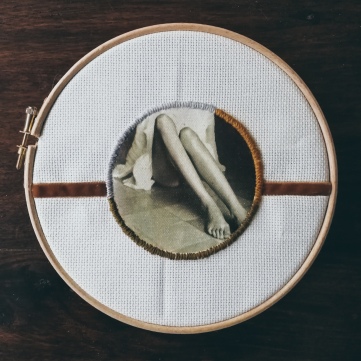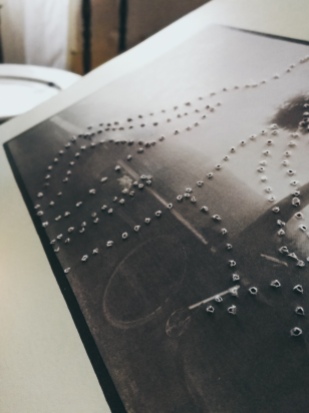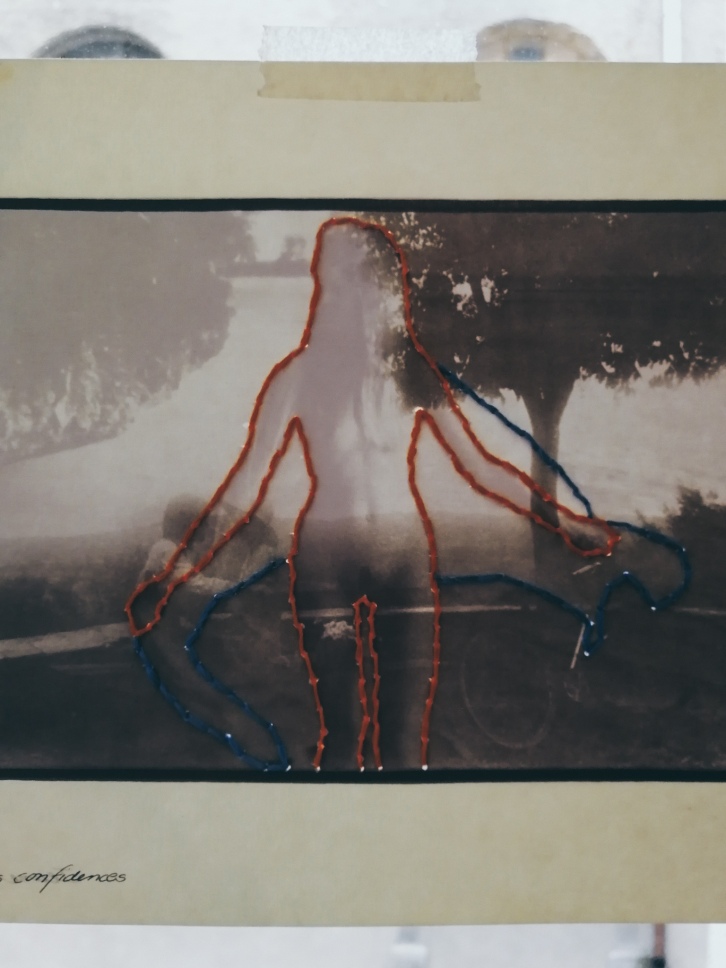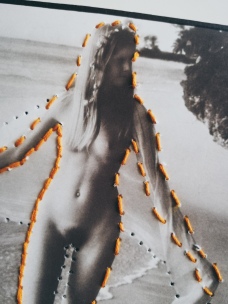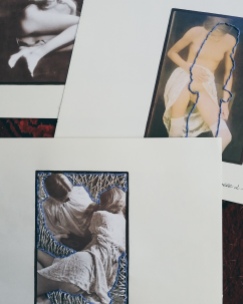I can’t believe it’s almost Midsummer! This has not really been the season by the sea I was hoping for, but at least I am lucky to be spending it safe and sound with my husband and the dog, who absolutely loves having both of his parents home with him. In other news, my furlough continues, and with it, the exploration of different ways of making art: this cheerful little embroidery below will make up most of my next artwork aiming to combine embroidered and painted motifs.

The intersection of contemporary art and traditional crafts has intrigued me for some time now: most of my life in fact, if you count in the masterpieces I was creating before I could lace up my boots properly. In fact, one of my earliest art-making memories is about my grandmother and her sewing cards. These colouring-meets-sewing kits tend to be a bit of a Nordic thing, but basically they are these sturdy printed cards with pre-punched holes for kids to “embroider”. The concept is pretty straightforward: first you stitched around the outline of your colouring picture with a plastic needle, using any of the multi-coloured threads from the kit or a piece of left over yarn. Then you were to expertly colour in the image and presented the magnum opus to your Nan, who would immediately call you a very clever little thing and perhaps reward you with a bowl of wild strawberries liberally sprinkled with talkkuna.
I adored my Nan and I adored her sewing cards. She spared no expense nor effort in getting me the Moomins kit, tons of nature & farming ones as well as the coveted Disney Pocahontas collection. Eventually, I had sewn through the whole range available from the mobile shop that visited her secluded farm twice a week, so we started making our own. This was frankly much more interesting. Forget about the dull plastic needles for silly little children – the thick utilitarian card we used required a long, sharp adult one from my Nan’s sewing kit she kept in the drawer of her pedal Singer. I only ever stuck myself once. Embellishing my sewing-card self-portrait with my freshly-drawn blood remains the most avant-garde event of my art career to date.
My current piece is by no means the only time I have attempted to create combining visual art and embroidery. During my student years in Edinburgh College of Art, some years earlier, I returned to the subject of embroidery and painting time and time again, frankly, with mixed success. At that time, I felt a keen pressure to perform as a painter rather than pursuing any mixed media interests and it took me some time to return to carry out these experiments. Although inspired by a very different strain of research material, my Double Exposure project, begun in late 2018, borrows heavily on the work I did with my Nan’s sewing cards back in the early 90’s. Two of those pieces are currently on view at Envision Arts’ online exhibition Threaded II.
It is fascinating how I return to this subject matter time and time again, especially when I feel my college-aged experiments were not particularly promising. In a way it is like an itch I need to scratch. Now is as good of a time as any – the world has gone mad and I suddenly feel less self-conscious about my work than I have ever been.
All those years ago, each time I finished a sewing card, my Nan would pin in on the wall, adding it to a growing collection of drawings by her grandchildren at the back of her cottage, right above her radio and next a selection of framed family photos. There was some rotation, but her favourites would remain for years, long after I stopped embroidering, probably long after I grew up and stopped visiting too. All that yellowed card and faded thread – as far as I can remember they were the only art she ever owned. Well, besides from those naff tea-towels printed to double up as calendars.
She died of advanced dementia nearly ten years now, my Toini-Mummu, and this one is for her.




